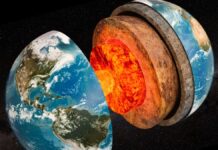The BBC Studios and Apple TV+ collaboration, Prehistoric Planet: Ice Age, represents the latest evolution in wildlife documentaries featuring long-extinct species. Building on the success of earlier series like Walking with Dinosaurs and Prehistoric Planet, this installment focuses on the diverse megafauna of the last ice age, delivering visuals that blur the line between reconstruction and reality.
Unparalleled Visual Fidelity
The series stands out due to its astonishing realism. The animals’ movements and, especially, their eyes appear remarkably lifelike – so much so that discerning extinct creatures from modern ones requires close scrutiny. While minor imperfections in movement exist, paleontologists and viewers alike have praised the overall quality, with one observer noting the only giveaway is “how good they look.”
Beyond Mammoths and Saber-Toothed Cats
Prehistoric Planet: Ice Age avoids a narrow focus on iconic species like woolly mammoths and Smilodon. Instead, it provides a global perspective, showcasing lesser-known creatures from various regions. The program highlights the surprising dominance of certain African species during the ice age, along with Australian megafauna such as the marsupial lion (Thylacoleo ) – recently linked genetically to modern koalas – and the rhino-sized Diprotodon.
Scientific Accuracy and Omissions
The series incorporates recent paleontological findings, like the updated reconstructions of dire wolves that move beyond the popular fantasy depictions. However, the brief scientific segments at the end leave viewers wanting more in-depth explanations from experts. Critically, the program omits discussion of carbon dioxide’s role in initiating and amplifying ice age cycles, despite CO2 decline being a primary driver of past glaciations. This omission is notable given current climate debates.
Narrative and Production Choices
The shift to Tom Hiddleston as narrator, replacing David Attenborough, proves somewhat distracting for some viewers. The series also avoids graphic depictions of violence, likely to cater to a broader audience. Despite these choices, the production excels in bringing extinct animals to life with unprecedented detail, offering a compelling argument that virtual de-extinction is the most realistic path for appreciating these lost species. The extinction of these beasts is now final; the program serves as a poignant reminder of the irreversible nature of past climate shifts.








































